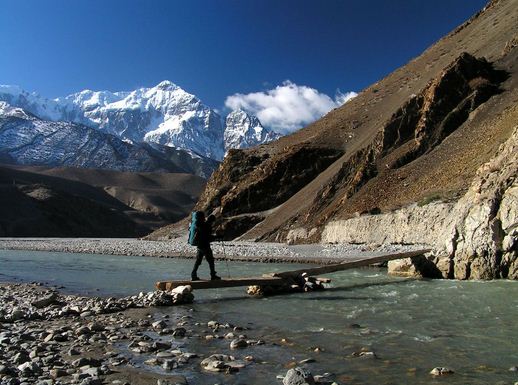Location: Swayambhu, Kathmandu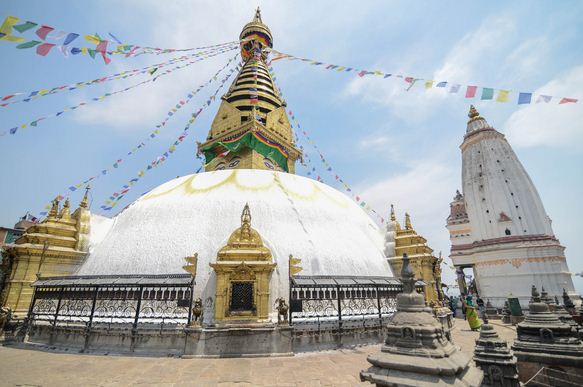
Affiliation: Buddhism
Country: Nepal
Coordinates: 27.715004°N 85.290347°E
Swayambhu is an ancient Religious Architecture in Kathmandu valley. It occupies a central position. It is probably the most sacred among Buddhist Pilgrimage Sites. Swayambhu is the oldest Religious Sites in Nepal. Swayambhu was founded by the Great Grandfather of King Manadeva. It is the place which is revered by both Buddhists and Hindus. Pratap Malla is responsible for the construction of the Eastern stairway in 17th century. It was Build in 1500 years ago. The Stupa was completely renovated in May 2010.
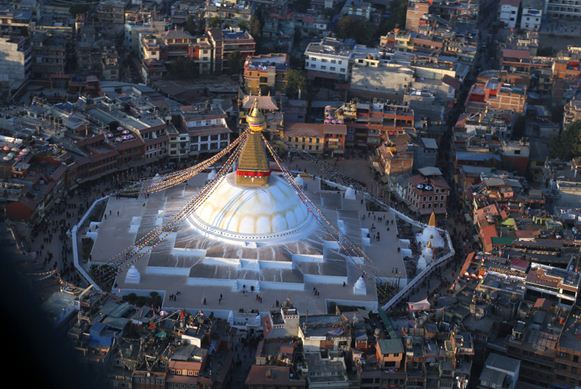 The Site has a long stairway with 365 steps. The first sight on reaching the top of the stairway is Vajra. According to the Mythology the entire valley was filled with an enormous Lake. The valley came to be known as Swayambhu which means self created. The name comes from an Internal self existent flame. The Stupa consists of dome at the base. The dome is in a cubical structure. The dome is painted with the eye of Buddha looking in all four directions. Above the each pair of eyes there is another eye. It is the third eye of Buddha. It is said that when Buddha preaches cosmic rays emanate from the third eye which acts as messages to heavenly beings so that those interested can come down to earth to listen to the Buddha. The cosmic rays relieve the human suffering when Buddha’s preaches. The two eye of Buddha is also called as the wisdom eyes. A nose of Buddha or the curly symbol represents the unity of all things existing in the world. The thirteen pinnacles on the top symbolize that sentient being have to go through the thirteen stages of spiritual realizations to each Bouddhahood. There are also the statues of Buddhas at the base of the Stupas. The Vairochana is in the center and is the master of the Temple. There are carvings of the five Buddha on each side of the Stupa.
The Site has a long stairway with 365 steps. The first sight on reaching the top of the stairway is Vajra. According to the Mythology the entire valley was filled with an enormous Lake. The valley came to be known as Swayambhu which means self created. The name comes from an Internal self existent flame. The Stupa consists of dome at the base. The dome is in a cubical structure. The dome is painted with the eye of Buddha looking in all four directions. Above the each pair of eyes there is another eye. It is the third eye of Buddha. It is said that when Buddha preaches cosmic rays emanate from the third eye which acts as messages to heavenly beings so that those interested can come down to earth to listen to the Buddha. The cosmic rays relieve the human suffering when Buddha’s preaches. The two eye of Buddha is also called as the wisdom eyes. A nose of Buddha or the curly symbol represents the unity of all things existing in the world. The thirteen pinnacles on the top symbolize that sentient being have to go through the thirteen stages of spiritual realizations to each Bouddhahood. There are also the statues of Buddhas at the base of the Stupas. The Vairochana is in the center and is the master of the Temple. There are carvings of the five Buddha on each side of the Stupa.
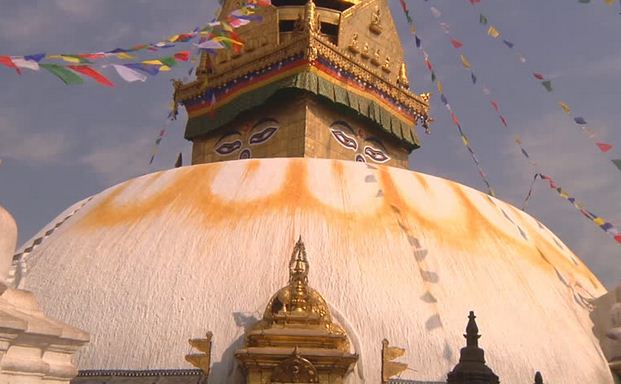 Now, Swayambhu is a UNESCO world Heritage Site. It is a 5th century stone inscription which was honored by Lings, Monks and Pilgrims. The Stupa has been restored and repaired on numerous occasions. The History is that, during 20th century, the famous Bhutanese master Lopontsechu Rinpoche (1918-2003), the late abbot of the Bhutanese Drugpa Kagyu Monastery come Nepal to assist his uncle, the Drukpa Lama Sherab Dorje, in maintaining and restoring the Stupa. The most recent renovation of the Swayambhu Stupa was completed in May 2010.
Now, Swayambhu is a UNESCO world Heritage Site. It is a 5th century stone inscription which was honored by Lings, Monks and Pilgrims. The Stupa has been restored and repaired on numerous occasions. The History is that, during 20th century, the famous Bhutanese master Lopontsechu Rinpoche (1918-2003), the late abbot of the Bhutanese Drugpa Kagyu Monastery come Nepal to assist his uncle, the Drukpa Lama Sherab Dorje, in maintaining and restoring the Stupa. The most recent renovation of the Swayambhu Stupa was completed in May 2010.
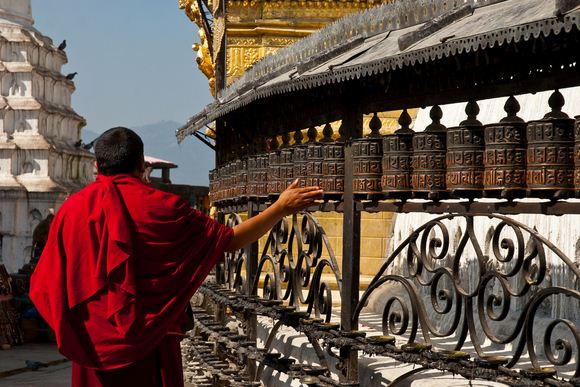 The Stupa represents the Buddha’s mind. It is believed that to visit a Stupa is said to be the same meeting a Buddha in a person. Just seeing, hearing about, reflecting upon, or touching a Stupa fosters peace and even spiritual release. The Stupa pacifies physical and mental difficulties. The visitors and Pilgrims walk around the Stupa in a clock wise direction and make wishes for the benefit of all beings. When walking around the Stupa clockwise, one passes five shrines symbolizing the Mandala of the five Buddha families.
The Stupa represents the Buddha’s mind. It is believed that to visit a Stupa is said to be the same meeting a Buddha in a person. Just seeing, hearing about, reflecting upon, or touching a Stupa fosters peace and even spiritual release. The Stupa pacifies physical and mental difficulties. The visitors and Pilgrims walk around the Stupa in a clock wise direction and make wishes for the benefit of all beings. When walking around the Stupa clockwise, one passes five shrines symbolizing the Mandala of the five Buddha families.
 Here is Nepal a blog about Nepal
Here is Nepal a blog about Nepal
